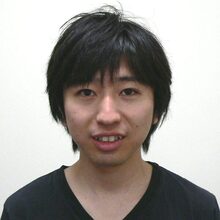Past Events
[ONOS Seminar Series] Professor. Andrew Miri : Firing dynamics organization of motor cortical influence
2023-05-18Firing dynamics organization of motor cortical influence
[ONOS Seminar Series] Professor Jimmy Dooley : How movements during sleep teach infant brains how their bodies move
2023-04-20OIST Neuroscience Club is excited to host Prof. Jimmy Dooley from the department of biological sciences, Purdue University, USA. If you are interested in knowing how slight twitchy movements during your sleep in your infancy shape your brain, make sure to join the seminar!
[ONOS Seminar Series] Professor Takeshi Sakurai: Induction of hibernation-like state in mice
2023-03-30OIST Neuroscience Club is excited to host Prof. Takeshi Sakurai from the International Institute for Integrative Sleep (WPI-IIIS) Medicine, University of Tsukuba. Everyone is welcome to join the seminar!
[ONOS Seminar Series] Professor Lisa Genzel: Complex memory, sleep and plasticity
2023-02-22OIST Neuroscience Club is excited to start this year's ONOS seminar series with Prof. Lisa Genzel from Donders Institute for Brain, Cognition, and Behaviour, Radboud University, Netherlands. Everyone is welcome to join the seminar!
[Seminar] Professor Hiroshi Makino: Learning in intelligent systems
2022-10-20[Neuroscience Club] Prof. Hiroshi Makino, Assistant Professor, Nanyang Technological University. Language: English.
[Seminar] Professor Gabrielle Girardeau: Neural mechanisms for memory and emotional processing during sleep
2022-09-15We are excited to have an online seminar by Prof. Gabrielle Girardeau from CRCN Inserm. Everyone is welcome to join the seminar!
Neural mechanisms for memory and emotional processing during sleep
The hippocampus and the amygdala are two structures required for emotional memory. While the hippocampus encodes the contextual part of the memory, the amygdala processes its emotional valence. During Non-REM sleep, the hippocampus displays high frequency oscillations called “ripples”. Our early work shows that the suppression of ripples during sleep impairs performance on a spatial task, underlying their crucial role in memory consolidation. We more recently showed that the joint amygdala-hippocampus activity linked to aversive learning is reinstated during the following Non-REM sleep epochs, specifically during ripples. This mechanism potentially sustains the consolidation of aversive associative memories during Non REM sleep. On the other hand, REM sleep is associated with regular 8 Hz theta oscillations, and is believed to play a role in the regulation of emotional reactions and the consolidation of emotional memories (emotional processing). Unraveling the fine neuronal dynamics related to REM sleep, Non-REM sleep and the transitions between states in the hippocampus-amygdala network will further our understanding of the implication of these sleep stages and related brain patterns in emotional processing.
You can join the seminar via ZOOM
[Date updated!!] Dr Terufumi Fujiwara: Multimodal, multi-timescale signals in the visual system orchestrate robust, rapid, and flexible walking control
2022-08-25[Neuroscience Club] Dr. Terufumi Fujiwara, Postdoctoral Fellow, Champalimaud Foundation, Portugal. Language: English.
[Seminar] Professor Lisa Giocomo: Multiple maps for navigation
2022-06-02[Neuroscience Club] Prof. Lisa Giocomo, Associate Professor, Stanford University. Language: English.
[Seminar] Professor Gabrielle Girardeau: Neural mechanisms for memory and emotional processing during sleep
2022-05-12
[Neuroscience Club] Prof. Gabrielle Girardeau, Principal Investigator, CRCN Inserm / Sorbonne University
[Seminar] Professor Hidehiko Inagaki: A midbrain-thalamus-cortex circuit reorganizes cortical dynamics to initiate planned movement
2022-04-21[Neuroscience Club] Prof. Hidehiko Inagaki, Research Group Leader, Neural Dynamics & Cognitive Functions Group
We are excited to have an online seminar by Prof. Inagaki from Max Plank Florida Institute for Neuroscience.
You can join the seminar via ZOOM (meeting ID: 782 721 4941, Password: 436475).












